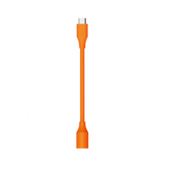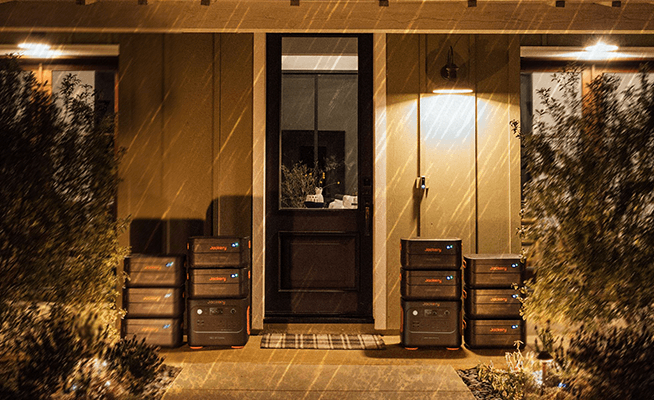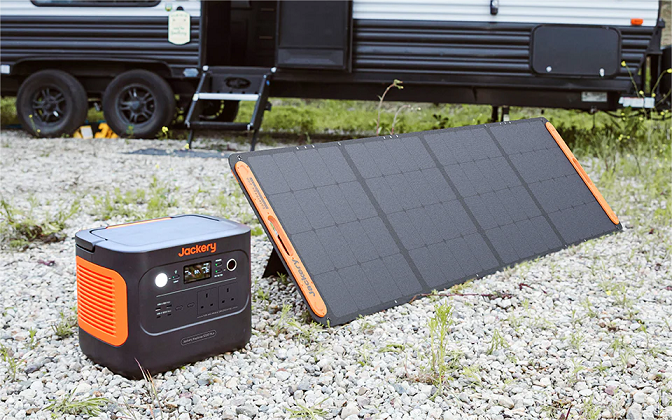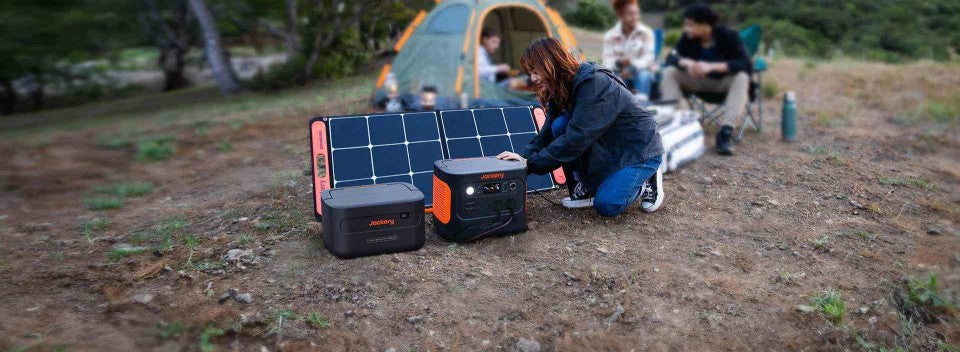A heatwave is defined as a weather event that occurs when the daily maximum temperature in a region reaches or exceeds a certain threshold for at least 3 consecutive days. It is difficult to associate a heatwave, which is characterized by high temperatures, with the UK, which is famous for its cold and wet weather.
However, in recent years, as record-breaking high temperatures have become more common across the UK, heatwaves have become a frequent weather event. In the UK, it is usually the southern regions, especially London and the southeast, that are most affected by heatwaves. After reading this blog, I believe you will have a deeper understanding of heatwaves in the UK and be able to master some preventive measures.
|
Key Takeaways: |
|
- In the UK, it is usually the southern regions, especially London and the southeast, that are most affected by heatwaves. - Heatwaves in the UK are usually affected by high pressure systems, urban heat island effects, geographical location and ocean currents, and climate change. - According to previous records, heatwaves in the UK are usually concentrated from June to August, especially in July. - The elderly, infants and children, patients with chronic diseases and outdoor workers are most vulnerable to heatwaves. Regularly check the warnings of the Met Office to keep abreast of the latest developments in heatwaves. - It is predicted that by the middle of the 21st century, heatwaves may occur as frequently in the UK as in previous years. - We recommend Jackery Explorer 2000 v2 to power your indoor and outdoor cooling appliances with higher capacities. |
Facts about the UK Heatwave
Heatwaves are defined as weather events that occur when the maximum daily temperature in a region reaches or exceeds a certain threshold for at least 3 consecutive days. Although less frequent than in the Mediterranean or tropical regions, heatwaves in the UK are increasing in frequency and intensity as climate change progresses. Here are some key facts about UK heatwaves:
When Do Heatwaves Most Often Occur in the UK?
Heatwaves mainly occur between June and August, so it is important for the public to remain vigilant. July is usually the peak month for heatwaves, based on verifiable weather surveys. For example, the Met Office recorded a record high temperature of 38.7°C in Cambridge in July 2019.
Which Regions of the UK are Worst Hit by Heatwaves?
In the UK, it is usually the southern regions, especially London and the southeast, that are most affected by heatwaves. The dense urban landscapes in these areas tend to exacerbate the effects of heatwaves, creating the so-called "urban heat island" effect. Northern regions, including parts of Scotland, are generally less affected by heatwaves.
Here are a few notable heatwaves that have occurred in different parts of the UK:
|
Region |
Date |
Temperature |
|
England (Coningsby, Lincolnshire) |
July 19, 2022 |
40.3°C |
|
Wales (Hawarden Airport, Flintshire) |
July 18, 2022 |
37.1°C |
|
Scotland (Charthall, Scottish Borders) |
July 19, 2022 |
34.8°C |
|
Northern Ireland (Castlederg, County Tyrone) |
July 21, 2021 |
31.3°C |
(Data Source: Met Office)
What Damage Can Heatwaves Cause in the UK?
The damage caused by heatwaves in the UK involves many aspects, including the following main impacts:
Health Risks
High temperatures can easily cause heat stroke and dehydration, which is particularly threatening to the elderly, people with chronic diseases and those living alone. The Environmental Audit Committee (EAC) said that heatwaves may claim up to 10,000 lives in the UK each year and cause a surge in workplace injuries.
Infrastructure Damage
Under the influence of heatwaves, tarmac roads soften, increasing maintenance costs. For example, in 2006, the road from Cornwall to Cumbria was damaged by heatwaves, and the repair bill in Oxfordshire alone was as high as £3.6 million. As people use fans and air conditioners to keep cool, the demand for electricity surges, which may cause power outages if the power grid is overwhelmed.
Environmental Damage
During heatwaves, prolonged high temperatures may cause droughts and crop yields. In addition, droughts may also cause wildfires to destroy natural habitats, such as the Saddleworth Moor fire in 2018, which destroyed about 7 square kilometers of ecological protection area.
Why Is There a Heatwave in the UK?
The causes of heatwaves in the UK are multifaceted, involving natural weather patterns, the impact of human activity, and geography. Here are the main causes of heatwaves in the UK:

High Pressure Systems
When high pressure systems, such as the North Atlantic High, stagnate over the UK, they cause downdrafts that suppress cloud formation, allowing sunlight to continue to hit the surface and temperatures to rise sharply.
This hot, dry weather can last for days or weeks. High pressure can also push hot air from North Africa or continental Europe toward the UK. For example, the 2022 heatwave was caused by a stubborn area of high pressure, when the UK broke 40°C for the first time.
Urban Heat Island Effect
The strong heat absorption capacity of materials such as concrete and asphalt in cities, coupled with the lack of vegetation and heat generated by human activities, causes urban temperatures to be 5-7°C higher than suburban areas.
In addition, heat dissipation is slow at night, which makes heatwaves last longer in cities. For example, cities such as London and Birmingham absorb and retain more heat than rural areas.
Geography and Ocean Currents
The UK is generally regulated by the North Atlantic Current (a branch of the Gulf Stream), and the climate is mild and humid. However, warming of the North Atlantic Ocean and southerly winds from the European continent (such as the heat wave in 2003) may weaken its cooling effect. For example, in the summer of 2018, the North Atlantic warm current was abnormally weak, and the high temperature in the east of the UK was aggravated by the influence of continental dry air currents.
Climate Change
Human activities (such as the burning of fossil fuels) have led to an increase in the concentration of greenhouse gases such as carbon dioxide in the atmosphere, and global temperatures have risen and the frequency and intensity of extreme weather have increased.
The UK is no exception, and the frequency and intensity of summer high temperatures have increased significantly in recent years. The UK Met Office reported that due to climate change caused by human activities, the possibility of heat waves is now 10 times higher.
When Is the Next Heatwave UK in 2025?
As the end of spring approaches, people are beginning to worry about when the UK's heatwave will arrive this year? Due to the unpredictable climate in the UK, predicting the exact time of the next heatwave is quite challenging.
However, by summarising the climate records of previous years and observing the current climate trends, some simple predictions can be made for the future.
UK heatwaves are usually concentrated from June to August, especially in July. For example, on July 19, 2022, the temperature in Coningsby, Lincolnshire reached 40.3°C, setting a high temperature record. It is inferred that the most likely period for the heatwave in 2025 is from mid-to-late July to early August 2025. However, heatwaves in recent years have tended to be earlier or later, so they may also occur in late June or mid-to-late August.
In 2023 and 2024, global temperatures hit record highs under the influence of El Niño. According to scientists' predictions, in 2025, the emergence of La Niña usually causes the Pacific Ocean surface temperature to drop, resulting in more humid and stormy weather in the UK. However, early temperature data for January 2025 is still higher than expected. Therefore, even with the influence of La Nina, the global warming trend is still pushing up temperatures, which means that the UK is still likely to experience a heatwave in the summer of 2025.
However, long-term weather forecasts have limited accuracy and can only be predicted more reliably closer to the date. According to the UK Met Office, weather forecasts for heatwaves can usually be predicted up to a week in advance. However, the smaller the time frame for heatwave forecasts (for example, one or two days in advance), the more accurate they are. For real-time updates, it is recommended to check the information published by authoritative meteorological agencies (such as the Met Office) regularly during the summer of 2025.
Who Is Most Vulnerable to Heatwaves?
During a heatwave, everyone is usually affected in some way, but some groups are particularly vulnerable to adverse health effects. In the UK, heatwaves have particularly severe effects on the following groups, which require special attention and protection:

Elderly Individuals
During a heatwave, elderly individuals (especially those over 65) are at risk of heat stroke, dehydration, and worsening of pre-existing diseases. Their bodies' ability to regulate body temperature is reduced, and most of them also have chronic diseases such as cardiovascular or respiratory diseases.
Infants and Children
Infants and children are prone to rapid dehydration and heat exhaustion during heatwaves, especially when they are in enclosed vehicles or poorly ventilated spaces. Their body temperature regulation system is not fully developed, and they usually rely on others to provide water and a shelter from the heat.
Chronic Disease Patients
High temperatures can increase the physical burden on patients with cardiovascular disease, diabetes, and asthma. In addition, patients with mental illness may not be able to cope with high temperatures in time due to cognitive impairment or the influence of medication.
Outdoor Workers or Manual Laborers
Generally, outdoor workers such as construction workers and farmers are prone to dehydration or heat stroke during heatwaves. Not only are they exposed to high temperatures for a long time, but they also consume a lot of physical energy.
Urban Residents
Cities, especially high-density residential areas, are much hotter than rural areas due to the urban heat island effect. In addition, cities are densely built, difficult to cool down at night, and lack ventilation.
Low-income Groups or Homeless People
Low-income groups may be forced to stay in high-temperature environments due to poor insulation in their homes and inability to afford air conditioning or fans. Homeless people lack shade, drinking water, and medical support, and are exposed to high temperatures for longer periods of time.
How to Deal with Next Heatwave UK?
Heatwaves are becoming more frequent in the UK as climate change intensifies, and being prepared can help you stay safe and comfortable. Here are some practical strategies for dealing with the next heatwave in the UK:

Tip 1: Follow Weather Alerts
When a heatwave is predicted, the Met Office will issue an alert. You can check the Met Office's alerts regularly to keep up to date with the latest heatwaves, especially the Extreme Heat Warning.
Tip 2: Cooling Indoors
Not all homes in the UK are designed to keep you comfortable during hot weather. So take the following steps to keep your living space comfortable and cool:
Shading and Insulation: Close curtains during the day to block direct sunlight, use reflective sunshades or tin foil to block heat, and use wet towels to cover the glass to cool down.
Ventilate at Night: If it is safe to do so, open windows for ventilation at night after the temperature drops, and use natural wind to cool down.
Practical Cooling Equipment: When the room temperature does not exceed 35°C, you can use electric fans to effectively cool down. If you have air conditioning, give priority to cooling the bedrooms and living room lights (such as bedrooms).
Tip 3: Outdoor Protective Measures
If you need to go out during a heat wave, please pay attention to the following outdoor protective measures:
Reduce the Frequency of Going Out: The UV index reaches its peak between 11:00-15:00, try to avoid going out and stay in the shade.
Sun Protection Wear: When going out in hot weather, please wear loose, light-colored clothing, a wide-brimmed hat and sunglasses, and use sunscreen with a high sun protection factor (SPF50+).
Tip 4: Replenish Water at All Times
During a heat wave, dehydration is one of the biggest risks for everyone. Therefore, please replenish water at all times to prevent the risk of dehydration. In particular, the elderly, infants, and patients with chronic diseases need to be supervised by someone to drink water.
Drink More Water: Even if you are not thirsty, you should drink water regularly. For example, drink at least 200ml of water every hour. If you go out, please carry a bottle of water with you.
Avoid Beverages: Be sure to remember to avoid excessive intake of alcohol, caffeine or high-sugar drinks, as they can cause dehydration.
Replenish Electrolytes: In addition to drinking water, you also need to replenish electrolytes in moderation, such as diluted juice or oral rehydration salts.
Tip 5: Emergency Measures
High temperatures can cause heat stroke, heat stroke, and even more serious health problems, so learn to recognize the symptoms and learn first aid.
Heat Exhaustion: If someone is dizzy, nauseous, sweating profusely, it is likely heat exhaustion. Move them to a cool place, rehydrate, undress, and cool them down immediately.
Heat Stroke: If someone has a temperature above 40°C and is unconscious, call 999 immediately. Then apply wet towels/ice packs to his neck and armpits to help cool him down.
Tip 6: Dealing with Emergency Power Outages
Extreme heat during heat waves can put pressure on the power grid and even cause power outages, which can affect the normal operation of cooling systems, refrigeration equipment, and even medical equipment.
Therefore, during heatwaves, keep mobile phones, flashlights, radios, and electronic devices fully charged. In addition, keep non-perishable food and plenty of bottled water on hand in case a power outage interrupts the operation of the refrigerator.
Most importantly, prepare a home power backup system in advance, such as a Jackery Portable Power Station or Jackery Solar Generator, to keep basic equipment running.

How Jackery Portable Power Station Can Help for Heatwaves?
A Jackery Portable Power Station can be a valuable asset in the UK during heatwaves by providing a reliable source of power for essential devices when the national grid might be strained or if there are localized power outages due to increased demand.
Even a small portable fan can make a significant difference in comfort during hot weather, especially at night. A Jackery power station can run these for hours. Some smaller, more energy-efficient portable AC units can be powered by larger Jackery models, offering localized cooling in a room. For instance, a 1000W air conditioner could run for about 1.6 hours on a Jackery Explorer 2000 v2 (2042Wh capacity).
Keeping food and drinks cool is crucial during a heatwave. A Jackery can power a mini-fridge to preserve perishables and ensure access to cold beverages. Here, we think the Jackery Explorer 2000 v2 is more suitable for powering cooling appliances during the summer in the UK.
Jackery Explorer 2000 v2
The Jackery Explorer 2000 v2 Portable Power Station has an astounding 2042Wh capacity and 2200W output, enough to power most cooling appliances, such as ceiling fan, portable AC, box fan, and more. It also has two AC outlets, one USB-A 18W port, and two USB-C ports (100W + 30W), so you can charge several devices simultaneously indoors and outdoors.
The world's first 2kWh LiFePO4 power station, which features advanced EV-grade CTB (Cell to Body) Structure technology⁵, is engineered to be more compact and lightweight. It weighs a mere 38.6 lbs—approximately the same as a suitcase. It is the ideal power solution for outdoor activities or home backup and features a foldable handle for effortless transport.
There are many ways to recharge it, including 2*SolarSaga 200W (5.5 hours), regular wall charging (1.7 hours), and car charging (24 hours). With Emergency Super Charge Mode, which can be activated through the Smart App, the power station can be charged from 0% to 80% in just 52 minutes with Emergency Super Charge Mode, which can be activated through the Smart App. This feature is ideal for situations where power is required urgently. A complete charge requires only 103 minutes in regular AC charging mode.

What Can an Explorer 2000 v2 Run in Summer?
The Jackery Explorer 2000 v2 is a portable power station with a substantial 2042Wh battery capacity and a continuous output of 2200W (with a 4400W surge peak). This significant power capacity and output make it highly effective for dealing with heatwaves in the UK in several ways:
Fan: With its large capacity, the Explorer 2000 v2 can power multiple fans for extended periods, providing crucial ventilation. A 60W fan could run for approximately 28 hours (2042Wh * 0.8 / 60W).
Portable AC: It can power more energy-intensive appliances like portable air conditioners for a reasonable duration, offering significant relief in a room. For example, a 900W portable AC could run for about 1.9 hours (2042Wh * 0.8 / 900W).
Refrigerator: Keeping food and medications cool is vital. The Explorer 2000 v2 can run a standard refrigerator (consuming around 150-520W) for several hours, preventing spoilage. A 400W refrigerator could run for approximately 4.3 hours.
(*The working hours are only for reference; the actual working hours depend on your usage.)
Are UK Heatwaves on the Rise?
In recent years, the frequent occurrence of extreme heat events in the UK has attracted global attention. More and more people are worried that heatwaves in the UK are increasing. The following will analyse whether heatwaves in the UK are increasing.
Breaking and Recurrence of High Temperature Records Are Shortened
In the past two decades, summer temperatures in the UK have repeatedly set new highs. The 2003 European heatwave is considered the hottest period in 500 years, with more than 2,000 deaths in the UK alone.
The high temperature of 32°C in Scotland at that time shocked the locals. However, the heatwave in 2022 reappeared with more extreme intensity. In July 2022, the UK broke the 40°C high temperature record for many consecutive days, and the temperature at Heathrow Airport soared to 40.2°C. More notably, two rounds of heatwaves occurred in July and August 2022.
Future Trends in Heatwaves in the UK
Environmental models predict that the UK will continue to experience an increase in the frequency, duration and intensity of heatwave events. It is predicted that by the middle of the 21st century, heatwaves may occur as frequently in the UK as in previous years, especially as global temperatures continue to rise due to climate change. By 2070, the probability of two or more days exceeding 30°C throughout the year will increase.
Forecasts show that the frequency of two or more days exceeding 30°C in southern England will be 16 times higher than it is now.
In short, although it is difficult to know when the next heatwave will arrive, based on the UK's temperature records in recent years, it is safe to say that extreme weather events in the UK will continue to occur from time to time in the future.
FAQs about Next Heatwave in the UK
The following are the frequently asked questions about the next heatwave in the UK.
1. Will the UK turn into a hot country?
Based on recent climate conditions, the UK is likely to get hotter. The Met Office predicts that temperatures may regularly climb above 40°C in the next few years, which means more heat waves will occur. (Data Source: Theecoexperts) According to Theccc, future high temperatures in the UK will endanger the health and lives of vulnerable groups. It is predicted that by 2050, the number of deaths from heatstroke will exceed 10,000 per year on average.
2. What is a heatwave?
According to the Met Office, a heatwave is defined as a weather event that occurs when the maximum daily temperature in a region reaches or exceeds a certain threshold for at least three consecutive days. However, these thresholds vary from region to region, reflecting the diversity of climate across the UK. For example, the threshold in London and the southeast is 28°C, while the threshold in Scotland is 25°C.
3. How long did the 1976 heatwave last in the UK?
The 1976 heatwave in the UK began in June and lasted for two months. The maximum temperature that year was 35.9°C.
4. Is 2025 summer going to be hot in the UK?
It is too early to predict the exact temperature of the summer a few months in advance. However, some scientists predict that the temperature in the UK in 2025 will be higher than the average. For example, climate change will continue to push up global temperatures. Therefore, the UK may still experience hot weather or even heat waves in the summer.
Final Thoughts
Heatwaves in the UK have become more intense and frequent in recent years. Although no one can accurately answer the question "When will the next heatwave in the UK come?", it is always a good idea to keep an eye on these extreme weather events.
According to previous records, heatwaves in the UK are usually concentrated from June to August, especially in July. In addition, the elderly, infants and children, people with chronic diseases and outdoor workers are most vulnerable to heatwaves. Therefore, please stay informed and prepared, so that you can minimize some of the risks brought by heatwaves.


























































